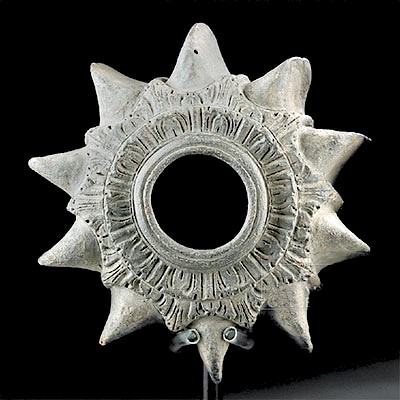Lot of Three 20th C. Papua New Guinea Bone Daggers
Lot 109d
About Seller
Artemis Fine Arts
686 S Taylor Ave, Ste 106
Louisville, CO 80027
United States
Selling antiquities, ancient and ethnographic art online since 1993, Artemis Gallery specializes in Classical Antiquities (Egyptian, Greek, Roman, Near Eastern), Asian, Pre-Columbian, African / Tribal / Oceanographic art. Our extensive inventory includes pottery, stone, metal, wood, glass and textil...Read more
Estimate:
$1,000 - $1,500
Absentee vs Live bid
Two ways to bid:
- Leave a max absentee bid and the platform will bid on your behalf up to your maximum bid during the live auction.
- Bid live during the auction and your bids will be submitted real-time to the auctioneer.
Bid Increments
| Price | Bid Increment |
|---|---|
| $0 | $25 |
| $300 | $50 |
| $1,000 | $100 |
| $2,000 | $250 |
| $5,000 | $500 |
| $10,000 | $1,000 |
| $20,000 | $2,500 |
| $50,000 | $5,000 |
| $100,000 | $10,000 |
| $200,000 | $20,000 |
About Auction
By Artemis Fine Arts
Jul 25, 2019
Set Reminder
2019-07-25 10:00:00
2019-07-25 10:00:00
America/New_York
Bidsquare
Bidsquare : Pre-Columbian | Tribal | Ethnographic
https://www.bidsquare.com/auctions/artemis-gallery/pre-columbian-tribal-ethnographic-4291
Featuring ancient and ethnographic art from around the world, including Pre-Columbian, Native American, African / Tribal, Ethnographic, Spanish Colonial, Fossils, Fine Art, much more. Many Oceanic pieces from an important Tucson, Arizona collection, first time at auction!! Artemis Fine Arts info@artemisgallery.com
Featuring ancient and ethnographic art from around the world, including Pre-Columbian, Native American, African / Tribal, Ethnographic, Spanish Colonial, Fossils, Fine Art, much more. Many Oceanic pieces from an important Tucson, Arizona collection, first time at auction!! Artemis Fine Arts info@artemisgallery.com
- Lot Description
Oceania, Papua New Guinea, possibly Maprik/Wosera area, Abelam and Arapesh peoples, ca. mid-20th century CE. A fine gathering of three short daggers carved from the thigh bone of a cassowary bird ("moruk" in Tok Pisin). The two smaller daggers feature intricately incised zigzag motifs, with one boasting a small concentric circle just below the pommel end, and the other with an abstract anthropomorphic face along the top of the blade; the pommel ends both feature a pair of abstract avian heads. The largest dagger boasts elaborate curvilinear motifs along the upper blade as well as a single pronounced avian head looking downward from the back of the pommel. Size of largest (single bird head pommel): 1.8" W x 8" H (4.6 cm x 20.3 cm); 6.8" H (17.3 cm) on included custom stand.
Cassowary bone daggers like these examples were traditionally worn on the upper arm, secured via a woven band, and occasionally around the neck. As a tool, bone daggers would have been used for hunting, combat, ceremonial sacrifices, digging, and/or dancing (singsing) decorations.
Provenance: private Tucson, Arizona, USA collection, acquired between 1950 and 1985
All items legal to buy/sell under U.S. Statute covering cultural patrimony Code 2600, CHAPTER 14, and are guaranteed to be as described or your money back.
A Certificate of Authenticity will accompany all winning bids.
We ship worldwide and handle all shipping in-house for your convenience.
#147571All items have small chips to dagger blades, pommel ends, and carved motifs, with softening to some finer details, light encrustations within some recessed areas, and age-commensurate darkening to surface color. Light earthen deposits and fine patina throughout.Condition
- Shipping Info
-
All shipping is handled in-house for your convenience. Your invoice from Artemis Gallery will include shipping calculation instructions. If in doubt, please inquire BEFORE bidding for estimated shipping costs for individual items.
-
- Buyer's Premium



 EUR
EUR CAD
CAD AUD
AUD GBP
GBP MXN
MXN HKD
HKD CNY
CNY MYR
MYR SEK
SEK SGD
SGD CHF
CHF THB
THB















